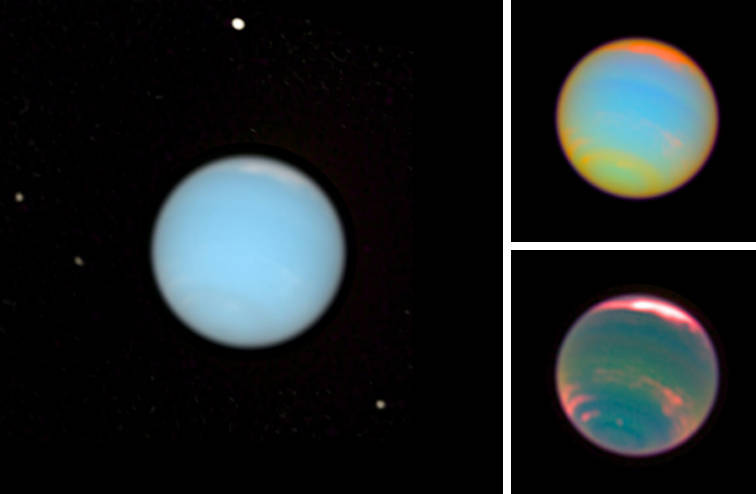
Neptune in Visible Light (Left)
This natural-color views shows Neptune in visible light with three of its moons.Neptune: Enhanced Color (Top right)
The planet is shown in enhanced color.Neptune: Methane Bands (Bottom right)
An enhanced color view shows Neptune’s methane bands.
A time-lapse movie of Neptune’s dynamic atmosphere and satellite orbits was assembled by combining images taken over a 15-hour period by the Hubble Space Telescope’s Advanced Camera for Surveys. The movie is composed of natural- and enhanced-color views of Neptune that were assembled from images taken in 14 different colored filters, which allow atmospheric features to be seen above Neptune’s methane haze.
Neptune is shown in natural color with its largest satellite, Triton, as it orbits the planet. Triton orbits in a “backwards” or retrograde path relative to the other major satellites, and is opposite to Neptune’s rotation. Zooming into Neptune, the colors were enhanced to show the subtle details in Neptune’s atmosphere. The spectral region of light is changed from the visible to special methane bands in the near-infrared resulting in Neptune’s atmosphere becoming very dark, except for high-altitude clouds. Coming into view are Neptune’s four smaller moons: Proteus, Larissa, Galatea and Despina.Image Credit: NASA/ESA/E. Karkoschka (University of Arizona)/H.B. Hammel (Space Science Institute, Boulder, Colo.)/G. Bacon (STScI)View Time Lapse Movie: 1.3 Mb QuickTime | 288 Kb QuickTime

























